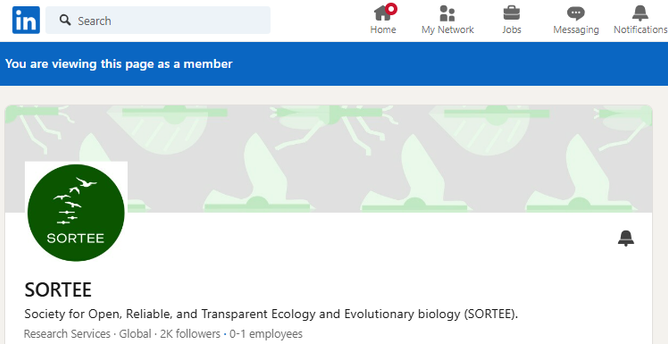Did you know the Society for Open, Reliable, and Transparent Ecology and Evolutionary Biology (SORTEE) is also on LinkedIn?
We keep our LinkedIn profile updated and are trying to reach more people. Check us out at: https://linkedin.com/company/sortee/
#openscience
SORTEE | LinkedIn
SORTEE | 1,520 followers on LinkedIn. Society for Open, Reliable, and Transparent Ecology and Evolutionary biology (SORTEE). | SORTEE is a service organization which brings together researchers working to improve reliability and transparency through cultural and institutional changes in ecology, evolutionary biology, and related fields broadly defined. Anyone interested in improving research in these disciplines is welcome to join, regardless of experience. The society is international in scope, membership, and objectives.
